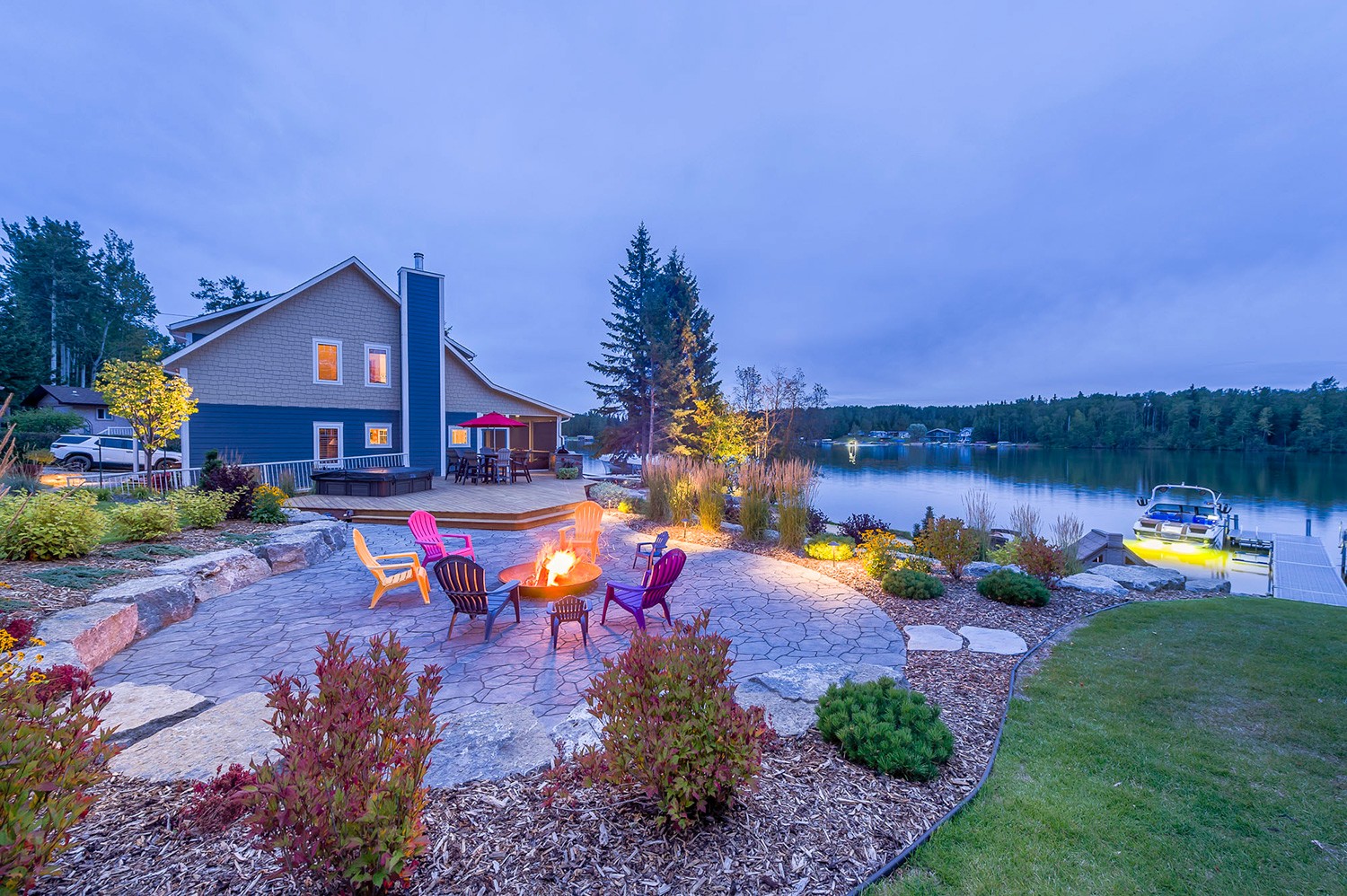Blog
Sustainable Professional Landscaping Practices

Are you tired of traditional landscaping practices that harm the environment and drain your wallet? It's time to make a change! Explore the world of sustainable professional landscaping practices that not only benefit the planet but also create beautiful outdoor spaces for you to enjoy. Say goodbye to harmful chemicals and excessive water usage, and hello to eco-friendly solutions that will leave your yard looking lush and vibrant.
The importance of sustainability in the landscaping industry
Landscaping is more than just creating a beautiful and functional outdoor space. It also plays a crucial role in promoting sustainability and preserving the environment. In recent years, there has been a growing awareness of the impact that traditional landscaping practices have on our planet, leading to an increased emphasis on sustainable practices within the industry. Let's delve into some of the key reasons:
1. Preservation of natural resources:
Landscaping involves working with plants, soil, water, and other natural elements. With unsustainable practices such as excessive use of fertilizers and pesticides, over-watering or using non-native plant species can deplete these resources and harm the ecosystem. By adopting sustainable practices like composting, using drought-resistant plants and practicing proper water management techniques, we can conserve resources while still achieving beautiful landscapes.
2. Promotes biodiversity:
Traditional landscaping often focuses on creating monocultures - large areas with only one type of plant or grass species- which are not beneficial for wildlife habitats and can lead to pest infestations. Sustainable landscaping promotes diversity by incorporating native plants, which support local wildlife populations and help maintain a healthy ecosystem.
3. Reduces pollution:
The use of chemical fertilizers and pesticides in traditional landscaping contributes significantly to water pollution when they run off into nearby bodies of water. This not only harms aquatic life but also affects human health through contaminated drinking water sources. Sustainable practices like using organic fertilizers, integrated pest management (IPM), and reducing chemical usage can help mitigate this issue.
4. Lowers carbon footprint:
The transportation involved in sourcing materials for traditional landscaping adds to carbon emissions contributing to climate change. By choosing locally sourced materials such as plants, mulch, and stone for landscapes, we reduce transportation distances thus lowering our carbon footprint.
5. Promotes long-term cost savings:
Although it may seem counterintuitive at first glance that sustainable practices may save money in the long run, they actually do. By using drought-resistant plants and practicing proper water management techniques, we can reduce water consumption resulting in lower utility bills. Additionally, sustainable practices like composting and mulching can improve soil health, reducing the need for expensive fertilizers and pesticides.
Sustainability is crucial in the landscaping industry as it not only benefits our environment but also promotes economic stability and social well-being. As a responsible professional landscaper, it is our duty to prioritize sustainable practices to ensure a greener future for generations to come.

How Professional Landscaping Companies Embrace Sustainability
As more and more people become aware of the impact that human activities have on the environment, there is a growing demand for sustainable practices in all industries, including landscaping. Professional landscaping companies are leading the way in incorporating sustainability into their projects by implementing various techniques and strategies that minimize harm to the environment while still creating beautiful outdoor spaces. Following are some ways in which professional landscaping companies incorporate sustainability into their projects.
1. Use of native plants
The use of native plants in landscaping has become increasingly popular due to its numerous benefits for the environment and overall sustainability. Native plants are those that naturally grow and thrive in a particular region, without any human intervention. In contrast, exotic or non-native plants are those that have been brought from other regions or countries.
One of the main advantages of using native plants in landscaping is their ability to adapt to the local climate and soil conditions. As they have evolved over time to survive in their specific habitat, they require less maintenance, irrigation, and fertilization compared to non-native plants. This makes them a more sustainable option as they reduce water usage and minimize the need for chemical inputs.
Moreover, native plants also support biodiversity by providing food and shelter for local wildlife such as birds, butterflies, and bees. These animals play an essential role in pollination and seed dispersal, which is crucial for maintaining a healthy ecosystem. By incorporating native plant species into our landscapes, we can help preserve these vital relationships between flora and fauna.
Another significant advantage of using native plants is their resilience against pests and diseases. Non-native plants often lack natural defenses against local insects and pathogens because they did not evolve alongside them. Therefore, they may require frequent pesticide applications resulting in harmful effects on both human health and the environment. On the other hand, native plants are better equipped to resist these threats due to their co-evolution with local organisms.
2. Water-efficient designs
It is important for professionals in the landscaping industry to implement water-efficient designs in their projects. One of the key elements of a water-efficient landscape design is proper planning and zoning. This involves grouping plants with similar watering needs together, known as hydrozoning. By doing this, plants that require less water can be placed in areas with less access to irrigation while those that need more moisture can be placed closer to sources of water. This ensures that each plant receives adequate hydration without wasting excess water.
In addition to strategic placement of plants, another crucial aspect of efficient landscape design is the use of native or drought-resistant plants. Native plants are naturally adapted to the local climate and soil conditions, making them more resilient to droughts and requiring minimal watering. Drought-resistant plants can significantly reduce the amount of water needed for maintenance purposes. These types of plants have evolved over time to thrive in dry conditions and therefore require little or no additional watering once established. Incorporating these species into a landscape design not only conserves water but also promotes biodiversity.
Another effective way to maximize water efficiency is through mulching. Mulch acts as a protective layer on top of soil by reducing evaporation rates and preventing weed growth that competes for moisture with desired plants. It also helps maintain soil temperature, which further aids plant growth while minimizing the need for frequent watering.
Irrigation systems play a critical role in efficient landscape design as well. Installing drip irrigation systems instead of traditional sprinklers can save up to 50% on annual watering costs by directly delivering small amounts of water straight to plant roots rather than spraying large amounts over larger areas where much of it is lost through evaporation.
3. Eco-friendly materials
In recent years, there has been a growing movement towards more sustainable and eco-friendly practices in the landscaping industry. These are products or substances that have a minimal negative impact on the environment during their production, use, and disposal. They are sourced from renewable resources and do not contain harmful chemicals or toxins that can harm ecosystems or human health.
One popular choice for eco-friendly landscaping materials is recycled or reclaimed products. This means using materials that have been previously used but can be repurposed for landscaping purposes. Examples include using crushed glass as mulch instead of traditional wood chips, which helps divert waste from landfills while also providing better drainage for plants.
Another important aspect to consider when choosing materials is their biodegradability. This refers to how easily they break down into natural elements without causing harm to the environment. For example, opting for organic fertilizers made from composted plant matter instead of synthetic ones not only reduces chemical pollution but also enriches soil health over time.
The type of hardscaping material chosen can also greatly impact sustainability efforts. Instead of concrete or asphalt, which contributes significantly to urban heat islands, permeable pavers made from recycled plastic or natural stone can be used for pathways and driveways. These allow rainwater to seep into the ground rather than running off into storm drains, reducing erosion and flooding.
4. Drought-resistant landscaping techniques
Drought-resistant landscaping techniques are becoming increasingly important in today's world, as water scarcity becomes a growing concern. These techniques not only help conserve water, but also save time and money for homeowners and businesses alike. In this section, we will discuss some effective drought-resistant techniques that can be incorporated into professional landscaping practices.
1. Choose native plants: Native plants have evolved to thrive in their specific environment and require less water compared to non-native species. They also tend to be more resistant to pests and diseases, reducing the need for chemical pesticides.
2. Incorporate xeriscaping: It involves grouping plants with similar water needs together and creating zones based on sun exposure and soil moisture levels. This approach helps conserve water by reducing runoff and evaporation.
3. Use mulch: Mulching refers to adding a layer of organic material such as wood chips or shredded bark around plants to help retain moisture in the soil. This not only reduces the frequency of watering but also prevents weed growth, which competes with plants for water.
4. Install drip irrigation: Drip irrigation systems deliver small amounts of water directly to the roots of plants through tubes or hoses placed on or below the surface of the soil. This targeted approach uses up to 50% less water compared to traditional sprinkler systems.
5. Implement rainwater harvesting: Rainwater harvesting involves collecting rainwater from roofs or paved areas and storing it for later use in irrigation systems or other non-potable purposes such as washing cars or flushing toilets. This not only conserves freshwater resources but also reduces storm water runoff.
6. Incorporate hardscaping: Hardscaping refers to the use of non-plant elements such as rocks, gravel, and pavers in landscaping. These features not only add visual interest but can also help reduce water usage by providing a barrier between plants and evaporation-prone areas.
5. Composting and organic waste management
Composting is the process of breaking down organic materials, such as yard trimmings, food scraps, and leaves, into a nutrient-rich soil amendment. This natural decomposition process occurs through the work of microorganisms and earthworms, which break down the organic matter into humus – a dark, crumbly material that improves soil structure and fertility.
One major benefit of composting is its ability to reduce landfill waste. According to the Environmental Protection Agency (EPA), over 30% of household waste in the United States is made up of organic materials that could be composted instead. By diverting this waste from landfills, we can help reduce methane emissions – a potent greenhouse gas – and create a valuable resource for our gardens.
In addition to reducing waste, composting also helps retain moisture in soil by acting as a mulch layer. This means less water usage for your landscape, saving both money and resources. Compost also contains beneficial microorganisms that can suppress plant diseases and pests naturally.
When it comes to professional landscaping practices, incorporating compost into planting beds has numerous benefits. The rich nutrients found in compost help plants grow stronger roots and healthier foliage. This leads to more vibrant colors in flowers and richer flavors in fruits and vegetables.
6. Renewable energy sources for outdoor lighting and irrigation systems
One of the most common renewable energy sources used in outdoor lighting is solar power. Solar panels are installed to capture the sun's energy during the day, which is then stored in batteries and used to power lights at night. This eliminates the need for traditional electricity from the grid, reducing carbon emissions and lowering utility costs.
Solar-powered lights come in a variety of styles, including pathway lights, spotlights, and even string lights for decorative purposes. They are easy to install and require little maintenance once set up. In addition to being environmentally friendly, solar lights also offer flexibility as they can be placed virtually anywhere without worrying about wiring or outlets.
Another renewable energy option for outdoor lighting is wind power. Wind turbines can be incorporated into landscape designs to generate electricity that can power lighting systems. These turbines work by capturing kinetic energy from wind and converting it into electrical energy through a generator. While this may not be as widely used as solar power due to its site-specific nature and potential noise concerns, it can still be a viable option for certain landscapes.
In terms of irrigation systems, using renewable energy sources such as solar or wind power can greatly reduce water usage while maintaining healthy plant growth. Solar-powered drip irrigation systems deliver small amounts of water directly to plants' roots, minimizing evaporation and runoff compared to traditional sprinkler systems.
Wind-powered pumps can also be utilized for irrigation purposes by drawing underground water from wells or reservoirs without relying on electricity from the grid. This allows for more efficient watering while reducing reliance on fossil fuels.
In conclusion, sustainable professional landscaping practices are crucial for preserving the environment and promoting a healthier ecosystem. By following these practices, we can reduce waste, conserve resources, and minimize our impact on the planet. Additionally, implementing sustainable techniques can also result in cost savings for both individuals and businesses. It is important that we all take responsibility and make conscious efforts towards creating a more sustainable future through our landscaping choices. So let's adopt these practices and work together to create a greener and healthier environment for generations to come.


